On the last
full weekend in April, my second here in Nepal, we took a road trip to the
touristy town of Pokhara. Andrew Broan arrived on Tuesday, not quite off his
jet lag (we’re 11 hours and 45 minutes ahead of Tucson) but raring to see some
more of Nepal; Kate spent much of the day packing and getting the babies ready;
and Mich got off work at the embassy early to help load the car and start the
drive. We then spent the next hour and a half in a long, slow line of traffic
just getting to the outskirts of Kathmandu.
We didn’t
quite make it to Pokhara. In fact, we made it halfway, traveling just 66
miles in 4 ¼ hours. Nepal clearly has the worst overall highway infrastructure of any
country I’ve been to. We found a nice hotel right on the highway to spend the night,
and it looked like there would be some habitat on the grounds for birds.
As
usual, the next morning I was up before anyone else, and looked out over the highway from our
balcony.
Red-vented
Bulbuls were chattering and flying about, a Blue-throated Barbet chortled somewhere,
and I heard lots of bird sounds I didn’t know.
Almost
immediately, I saw a brown bird fly towards the hotel from across the highway.
I rushed to get my camera and found this Asian Barred Owlet on his morning
hunt.
It was a
lazy start the morning, giving me and Mich some time (mostly with Mara, just
under two years old) to see what was on the hotel grounds. My first
Black-chinned Babbler, Gray-breasted Prinia, and Crimson Sunbird were here, and
there were surely many more lifers calling unseen from the wooded slope behind the hotel.
While I was looking over a grassy patch across a ravine, a pair of White-rumped Munias flew in. I
thought these were also new for me, but it turns out I saw them on Lombok almost
exactly three years ago.
While we
were having breakfast, Mich noticed something like a Squirrel Cuckoo from high
on the slope. They turned out to be four Sirkeer Malkohas, an oddly similar
cuckoo, and a lifer for both of us.
We finally
set off for Pokhara in the late morning. This leg of the trip was only about 60
miles, but it still took us 2 ½ hours of driving. My view from out the back of the Mahindra Scorpion.
There are
dozens and dozens of hotels in Pokhara, and my friends settled on one of the pricier
ones, Fishtail Lodge. And it was definitely overpriced, with watered-down
alcohol and internet in the
rooms only if you paid extra (whereas hotels at a 10th of the price have free internet). But the grounds are lovely, the construction beautiful, and it seems clear from its
location that this hotel is the best for birding, located against the forested
hillside across a narrow arm of the long, skinny reservoir that makes Pokhara
so famous.
You can get
here only by this human-powered passenger ferry.
I spent a
lot of time at the edge of the gardens, along the lake shore, and on trails-of-use on the steep slope behind the property. Here are the few I managed to
photograph.
Gray-hooded
Warbler
Cinereous
Tit (formerly considered a subspecies of Great Tit)
Himalayan
Bulbul
Gray Treepie
(rhymes with magpie)
Asian Koel –
a huge, noisy, and common cuckoo, but devilishly hard to see
I just
barely managed to get a copy of the Illustrated
Checklist of Nepal’s Butterflies by Colin Smith before I left home. It’s
hard to use, with small, only ok-quality photos of specimens, but it’s been
very helpful, and better than just the internet. Here are a few.
Parantica
aglea, Glassy Tiger (a Monarch relative)
Petrelaea
dana, Dingy Lineblue
Delias
hyparete, Painted Jezebel
Heliophorus
epicies, Purple Sapphire
Graphium
sarpedon, Common Bluebottle
I had to
rely upon the internet (and the moth experts who comment on photos) to ID this Gazalina sp., a notodontid in the
subfamily Thaumetopoeinae.
The same
goes for this mushroom, maybe Xerula species.
Mich is much
more into mammals than I am, so he had already identified this as Callosciurus
pygerythrus, Hoary-bellied Squirrel.
We don’t
have a herp book, but it didn’t take too much internet searching to ID this as Calotes versicolor, Oriental Garden
Lizard.
The
dragonflies here are abundant and gorgeous but have me totally stumped. In my next life…
On Sunday
morning, Mich, Andrew, and I took a short drive to the back side of the mountain
to one of Pokhara’s more famous tourist attractions, the World Peace Temple, on top of a ridge overlooking the part of Pokhara called Lakeside.
Mich’s
birding contacts said we could find Nepal’s only endemic bird in the scrubby
habitat here, Spiny Babbler. We scored big time, getting a photo and some good
recording of its thrasher-like song.
Fishtail Lodge
gets its name from the translation of the mountain Machhapuchhre, which we
could just barely see through the smoky haze that has been dominating the atmosphere
over Nepal for the past weeks. It’s the most prominent peak in the Annapurna
range, one of the more famous groups of peaks in Nepal's Himal.
Mich, Kate,
and the babies left for the long drive back to Kathmandu, while Andrew and I
stayed in Pokhara, found a cheaper hotel at my request, and made plans to do a short trek
towards those very mountains.


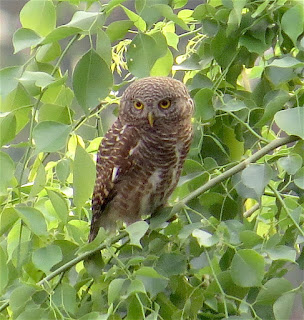

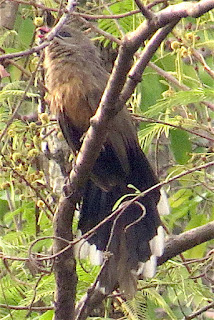




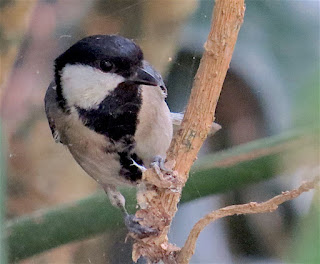


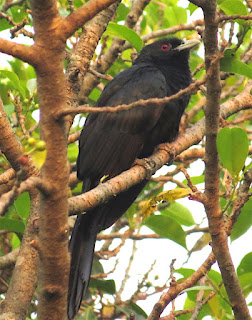
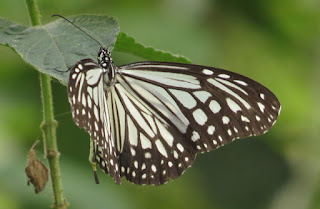
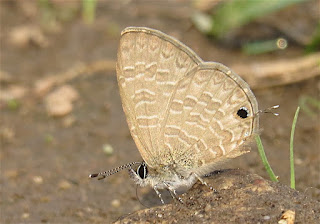

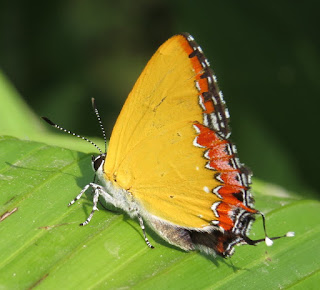




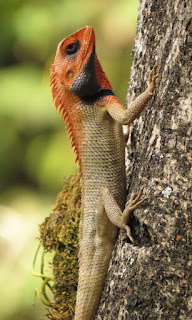










thanks for these exceptional pictures and comments, very informative indeed - jason
ReplyDeleteNice pics with details of species, getting rarer now.
ReplyDelete